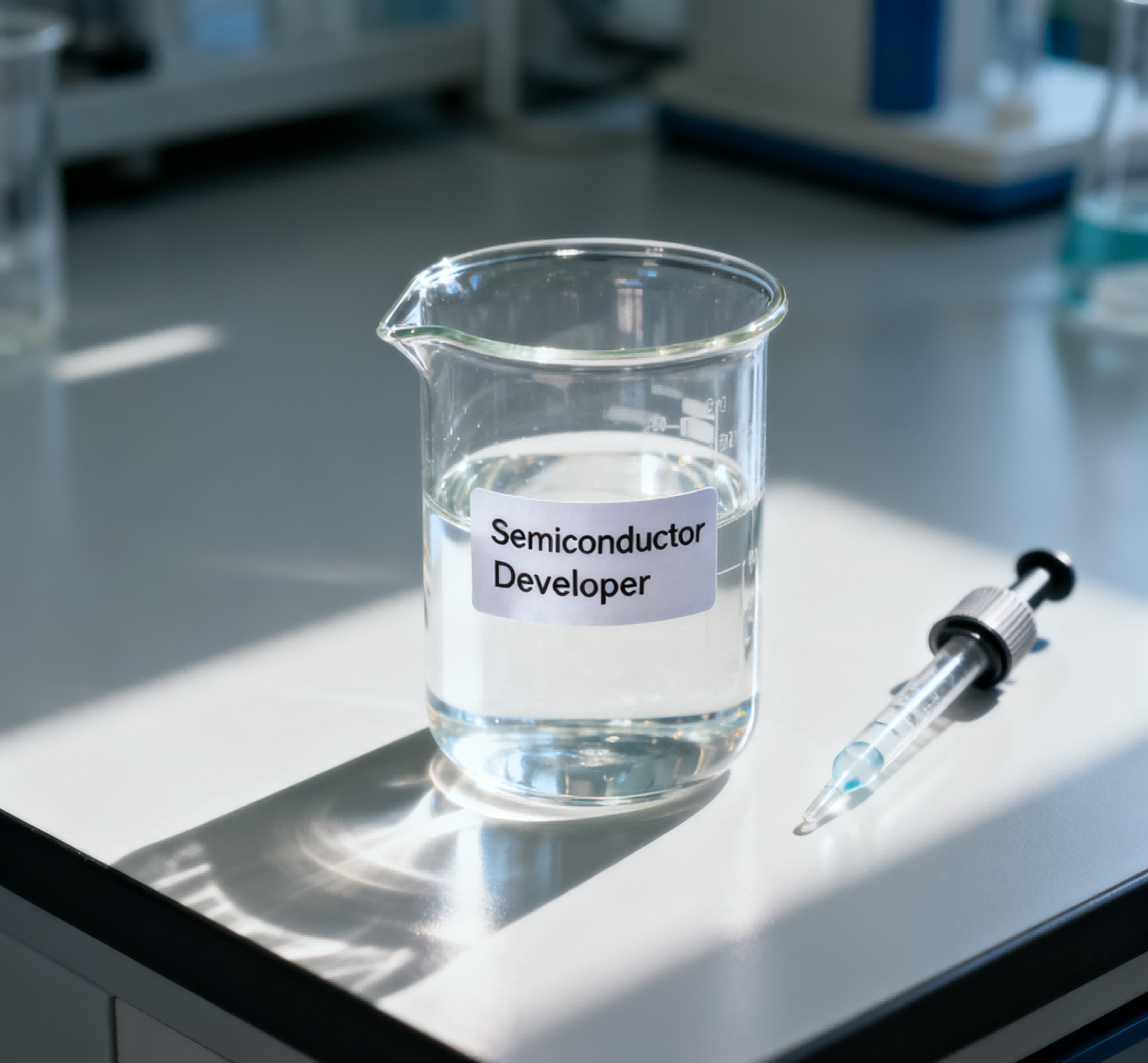

Summary and Solutions to Common Problems in Wet Development Processes
I. Abnormal Development Results
1. Underdevelopment
Phenomenon: Excessive photoresist residue, larger line width, and sidewall angle exceeding 90°.
Causes: Too short development time, insufficient developer concentration, too low temperature, or inadequate stirring.
Solutions:
Adjust development time (extend by 5–10 seconds) or developer concentration (e.g., increase TMAH from 2.38% to 3%).
Optimize spray pressure (≥2 bar) or introduce ultrasonic-assisted stirring.
2. Overdevelopment
Phenomenon: Edge collapse of patterns, smaller line width, and missing bottom resist residue.
Causes: Too long development time, excessively high temperature (>30°C), or fluctuations in developer pH.
Solutions:
Shorten development time (reduce by 5–10 seconds) and control temperature within 18–25°C.
Add buffers (e.g., phosphates) to stabilize pH and use an online pH monitor.
3. Incomplete Development
Phenomenon: Residual photoresist in localized areas, leading to short circuits or open circuits during subsequent etching.
Causes: Reduced developer activity (e.g., TMAH decomposition), excessive foam, or nozzle blockage.
Solutions:
Replace developer regularly (once every 4 hours) and install a defoamer injection system.
Clean nozzles daily and use a 0.1 μm filter to prevent blockage.
II. Developer-Related Problems
1. Developer Contamination
Phenomenon: Particle contamination or streaks on the wafer surface.
Causes: Contamination of the developer circulation system (e.g., metal ion precipitation) or environmental dust falling into the solution tank.
Solutions:
Filter developer with an ultrafiltration membrane (0.01 μm) and test metal ion concentration weekly (e.g., Na⁺ < 1 ppm).
Install a positive-pressure clean enclosure and upgrade the environmental cleanliness to Class 100.
2. Developer Degradation
Phenomenon: Reduced development rate and poor line width uniformity across wafers in the same batch.
Causes: Aging of developer (e.g., TMAH hydrolysis) or accumulation of by-products (e.g., silicate precipitation).
Solutions:
Monitor developer conductivity in real time (standard TMAH value: 8.0–8.5 mS/cm) and automatically replace it when thresholds are exceeded.
Use a dual-tank system: main tank for development and auxiliary tank for replenishing fresh solution.
III. Equipment and Process Parameter Problems
1. Uneven Spray
Phenomenon: Localized over-development or under-development on the wafer, resulting in non-uniform line width.
Causes: Nozzle wear, pressure fluctuations, or mismatched wafer rotation speed.
Solutions:
Use fan-shaped nozzles (spray angle ±2°) and control pressure with a precision of ±0.1 bar.
Implement closed-loop control for rotation speed (e.g., gradient adjustment from 2000 to 4000 rpm).
2. Temperature Fluctuations
Phenomenon: Significant variations in development degree across different regions of the same wafer.
Causes: Low efficiency of the developer circulation cooling system or fluctuations in ambient temperature/humidity.
Solutions:
Use a plate heat exchanger (temperature control precision ±0.5°C) and maintain ambient humidity at 40–60%.
Increase heat exchange area (e.g., with a finned condenser).
3. Residue Contamination
Phenomenon: Residual resist film or chemical deposits on the wafer surface post-development.
Causes: Insufficient purity of rinse water (TOC > 50 ppb) or incomplete spin drying.
Solutions:
Use ultrapure water (UPW, TOC < 5 ppb) and add a nitrogen purge step.
Optimize spin-drying parameters (centrifugal force ≥ 3000 rpm, time ≥ 30 seconds).





